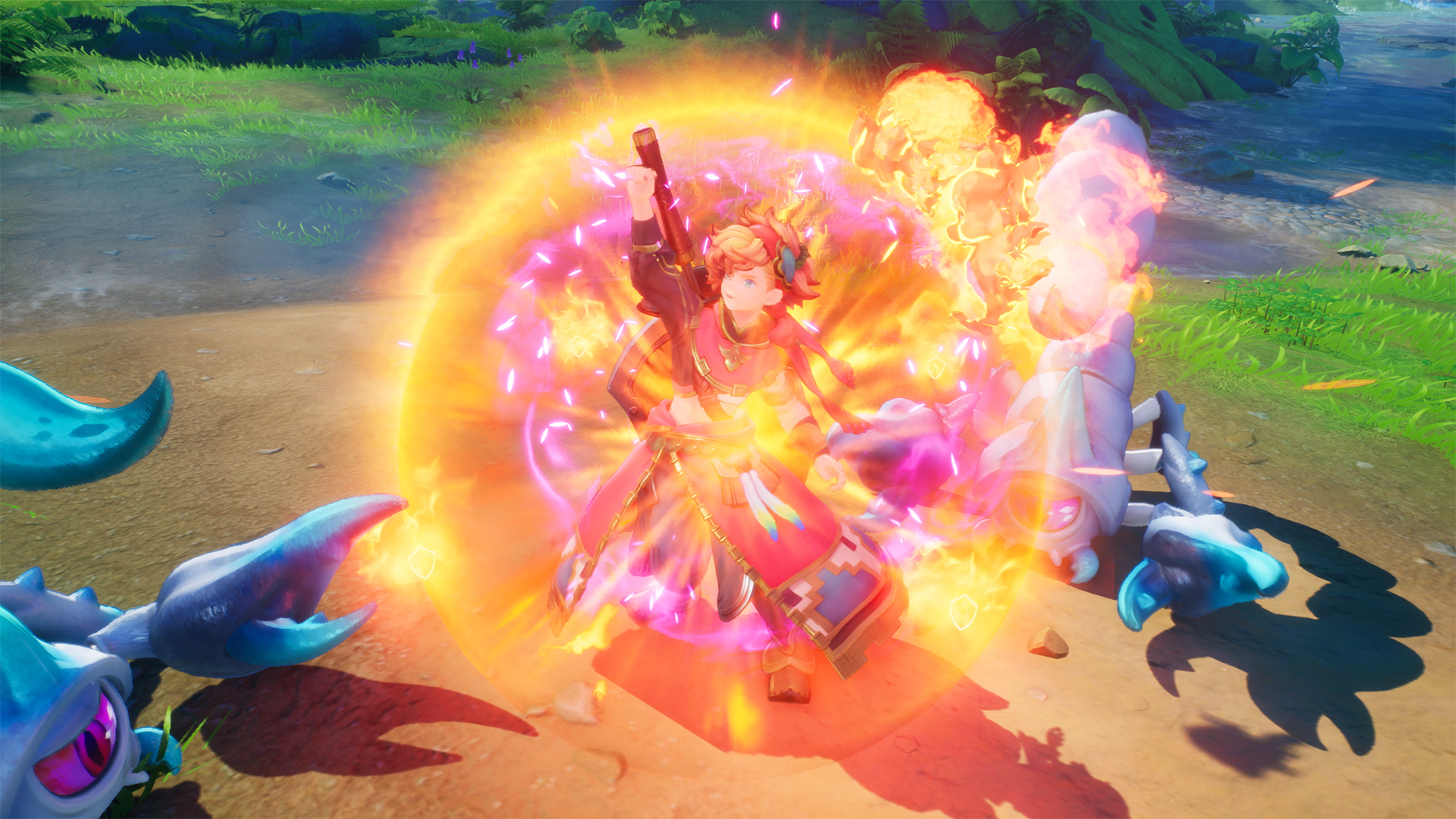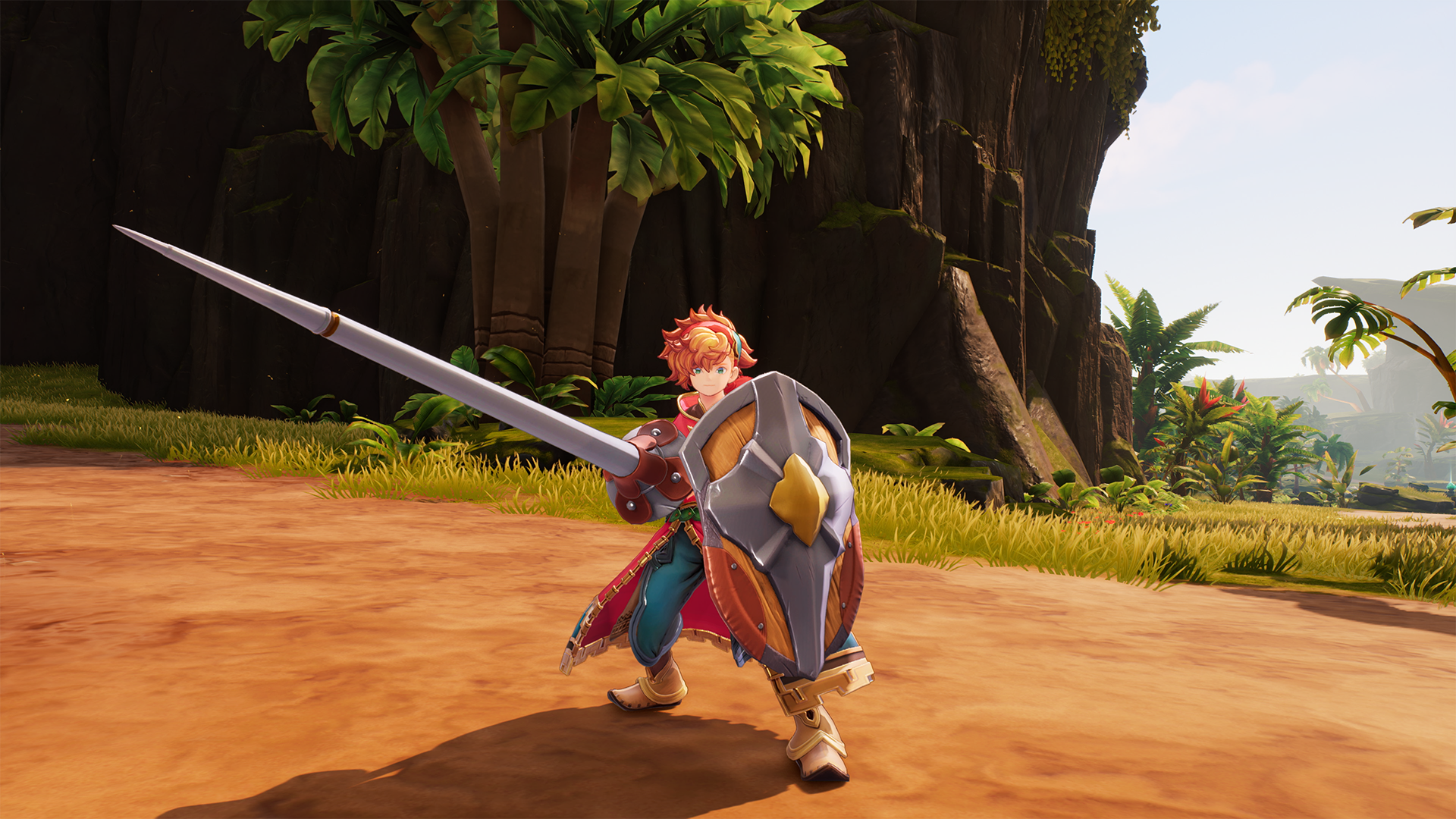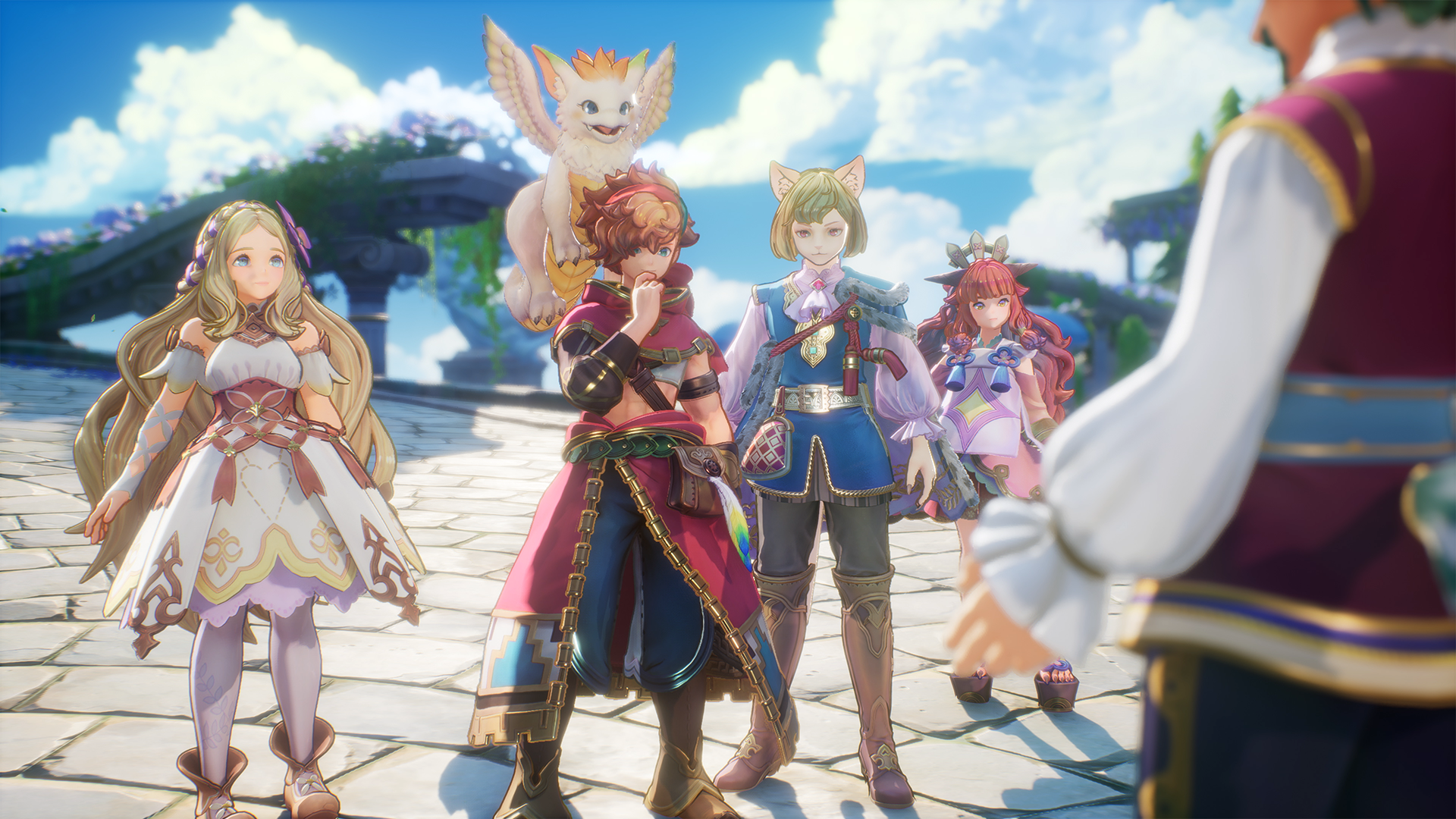TechRadar Verdict
The first original Mana series game in over a decade and a half is a pleasant romp through a visually stellar fantasy world. Fun combat quirks such as class switching and malleable builds offer plenty of customization, too, that’s all really quite easy to understand. Unfortunately, some stiffer elements of movement and a story that doesn’t quite realize its full potential have Visions of Mana falling short.
Pros
- +
Visually gorgeous world design
- +
Plenty of classes and customization therein
- +
Simple yet rewarding exploration
Cons
- -
Movement and combat can feel stiff
- -
Cumbersome fast travel options until late game
- -
Gets pretty repetitive in terms of gameplay loop
- -
Story doesn’t live up to its full potential
Why you can trust TechRadar
Platform reviewed: PS5
Available on: PC, PS5, PS4, Xbox Series X|S
Release date: August 29, 2024
Visions of Mana is the first original entry in the legendary Square Enix roleplaying game (RPG) franchise after a smattering of well-received remakes and remasters. Does the new game live up to venerated titles of the series’ history? Well, that’ll all depend on what kind of experience you’re looking for.
Off the jump, the most noticeable thing about Visions of Mana is its jaw-dropping visuals. This vividly-colored world really jumps out on an HDR-compatible display, and the game staunchly sets itself apart from the grimdark photorealism of other modern RPGs. Mana’s graphics aren’t state of the art but its visuals nonetheless leave a lasting impression - particularly within its larger cities and sprawling explorable zones.
Being an action RPG, developer Square Enix has managed to craft an interesting - if occasionally cumbersome - combat system. With straightforward combo strings and a range of magic spells, it’s a simple combat system that adds depth with Visions of Mana’s impressive class system that - when applied to the game’s five playable party members - allows you to unlock tons of abilities for highly customizable play. This is easily Visions’ strongest selling point, and worth checking out for alone.
With that all said, I can’t in good conscience say that Visions of Mana will stand the test of time. It’s a highly repetitive game from start to finish, and while its plot has bags of potential with some strong initial narrative hooks, statically-animated cutscenes, and ho-hum voice acting takes much away from the overall experience. Visions of Mana reminds me of Tales of Arise in that sense; a fundamentally great game that fumbles on some of the genre’s core foundations - ultimately leading to a game that likely won’t live long in the memory, and sadly not among the best RPGs we've played this year.
Sell your soul

Visions of Mana is set in a beautiful world with an unenviable burden. Once every few years, the patron Faerie visits each major region of the world to choose an alm - a person of incredible talent and willpower. These alms are typically assigned the element that governs the region they hail from, be that fire, earth, light, darkness, the moon, and so on. These alms, along with a person chosen as a protective ‘Soul Guard’, must make a pilgrimage to the Mana Tree at the center of the world to offer up their lives as sacrifices to sustain life for everyone else.
It’s a strong premise with an immediate hook, and as such, the initial story beats in Visions of Mana are exceptionally compelling. That’s especially so considering regions that fail to deliver an alm to the Mana Tree are met with catastrophe. As a result, we’re given a setup with immediately high stakes, and it paints a picture of an incredibly cruel and unfair world where anything short of perfection is met with disaster.
Our protagonist, Val, has been chosen as the Soul Guard for the latest pilgrimage. What complicates matters is that his significant other, Hinna, has also been selected as the alm of fire. Again, this is a fantastic hook; Val and Hinna are excited to travel the world, but neither wants to have to permanently say goodbye at journey’s end. A quandary arises; do they give into the sacrifice to avert widespread chaos, or do they try and find another way that doesn’t require such a price?
Sign up for breaking news, reviews, opinion, top tech deals, and more.
Unfortunately, I found that Visions of Mana’s narrative doesn’t quite explore its themes as well as it should. The game’s darker moments don’t really land due to some extremely static cutscenes with near-unchanging facial expressions. Narratively, such moments also aren’t given much time to really set in, especially as we move from area to area at a surprisingly rapid pace. Things do pick up again in the final acts, thankfully, but large chunks of the story are left feeling hollow and underdeveloped which is a shame.
Our main characters, similarly, don’t offer a whole lot in terms of personality or quirks beyond surface-level stuff. Their designs are lovely and varied, but they almost uniformly feel quite cookie-cutter in terms of overall character development which takes much of the drama out of the plot.
Fight it out

Combat, similarly, is quite the mixed bag. The good news is that Visions’ combat system is very straightforward, making it an easy game to just pick up and play. The bad? This simplicity is let down by some pretty clunky movement and combat feel.
The characters and their various weapon types have a range of basic and special attacks that can be strung together for combos. Each party member can also learn a variety of spells and activate devastating Class Strikes for big damage when that move’s gauge is full.
Visions of Mana’s class system is easily the game’s most impressive feature. Each of the game’s five party members has a base class when you first meet them. Then, eight more classes are unlocked as you progress through the game, governed by each of the game’s elementals. That makes for a total of 45 classes, with each party member having access to nine each.
Classes get stronger by unlocking new abilities in the Elemental Plot skill tree. Here, each class has a strictly linear track of skills to unlock, redeemable with skill points earned through battle. That linearity might seem disappointing, but it’s somewhat offset by the fact that classes are able to mix and match many of these skills.

I loved the class customization aspect of Visions of Mana. I was hugely impressed by the variety of classes on offer, as well as their unique aesthetics, weapon types, and various spells and abilities that can be unlocked. The fact you can take some spells from one class and apply them to another only heightens this, allowing for some truly fluid combinations within your three-person party.
As an example, I was able to turn Palamena into a damage powerhouse with the Darkness-aligned Reaper class. She has naturally high magic stats, so assigning spells of various elements to this class meant she could adapt to any given situation. Careena, meanwhile, works great as a buffer and healer and most of her classes revolve around this, so kitting her out with spells and skills to both buff characters and minimize the risk of status effects allowed her to be a mainstay in my team of three.
Characters can then further be augmented with the use of Ability Seeds. You’ll find these by opening chests or converting enemy Corestones (items that are randomly dropped from enemies containing their essence) into them once you unlock the ability to do so. Ability Seeds can provide skills and benefits not found within the Elemental Plot tree, and can really help a character reach their full potential.
You’ve got plenty of options when it comes to character builds, then, and that’s awesome. Sadly, the act of combat itself can be a bit cumbersome. Overall movement feels quite slow and occasionally unresponsive. When you jump, your character loses a bunch of momentum which seems counterintuitive for the kind of game this is. The flow of combat, overall, feels similar to Ys 8: Lacrimosa of Dana, albeit less polished and significantly slower. This is a shame, as the vast amount of customization in Visions of Mana has laid the groundwork for what could be a truly excellent combat system. Here’s hoping Square Enix can apply some finer touches via post-launch patches.
Take a hike

Visions of Mana absolutely nails it in the presentation department. This is a richly colorful game, and the vibrant palette really helps its world to feel alive. It’s not quite an open world here; rather, we have a number of large, explorable zones that are filled with a manageable amount of things to do.
Scattered throughout these gorgeous zones - which range from volcanic jungles to mesmerizing landscapes of ice - are treasure chests, optional combat shrines, and various environmental interactions that make use of your collected elements. The game isn’t absolutely awash with side quests, though the ones that are here boil down to simple monster-slaying or fetch quests that typically amount to little reward. Unlike The Witcher 3 or Final Fantasy 16, you’re not really missing much - narratively or otherwise - by skipping side quests in Visions of Mana.
The soundtrack also sadly doesn’t do much to stand out among the bustle of cities or the throes of combat. It very much takes a back seat and sounds quite low in the mix at default settings. Some later boss and area themes really do slap, however, so it’s not a total dud. It’s just not up to the very high standard set here by the likes of Secret of Mana or Trials of Mana.
In better news, Visions of Mana is superbly optimized on PlayStation 5. The game’s performance mode is especially impressive, managing to hold a smooth 60fps in most occasions, with the odd noticeable dip happening in busier areas or encounters. While I did note a couple of instances where the game froze up for a couple of seconds during exploration, these were thankfully a very rare exception to an otherwise pleasantly stable experience.
Accessibility
Visions of Mana has a very basic - but welcome - accessibility suite. Subtitles are supported, as well as text language support for English, German, French, Spanish, and Japanese players. You can also fully customize the game’s control scheme and adjust camera sensitivity settings.
Should I play Visions of Mana?
Play it if...
You want a simple and cozy action RPG
Visions of Mana is far from groundbreaking, but it just might scratch that itch if you’re looking for a breezy, straightforward action RPG experience.
You love class customization
The various classes and the cross-class customization they bring in terms of build variety add much-needed depth to the game, and it’s definitely its biggest selling point.
Don't play it if...
You were hoping for a stronger narrative
Despite its very strong initial hooks, Visions of Mana fails to keep the momentum going through its 30-hour runtime.
You prefer fluid, fast-paced combat
Combat in Visions of Mana often feels clunky with cumbersome movement and alarmingly short melee attack range.
How we reviewed Visions of Mana
I played Visions of Mana to story completion, which took around 30 hours. All the while, I sprinkled in plenty of environment exploration, completing numerous side quests and trying out various class combinations with the game’s five heroes. I played the game on PS5 on an LG CX OLED TV with a DualSense Edge controller, but do note that there aren’t any notable haptic feedback or adaptive trigger implementations here.
First reviewed August 2024.

Rhys is TRG's Hardware Editor, and has been part of the TechRadar team for over four years. Particularly passionate about high-quality third-party controllers and headsets, Rhys strives to provide easy-to-read, informative coverage on gaming hardware of all kinds. As for the games themselves, Rhys is especially keen on fighting and racing games, as well as soulslikes and RPGs.
